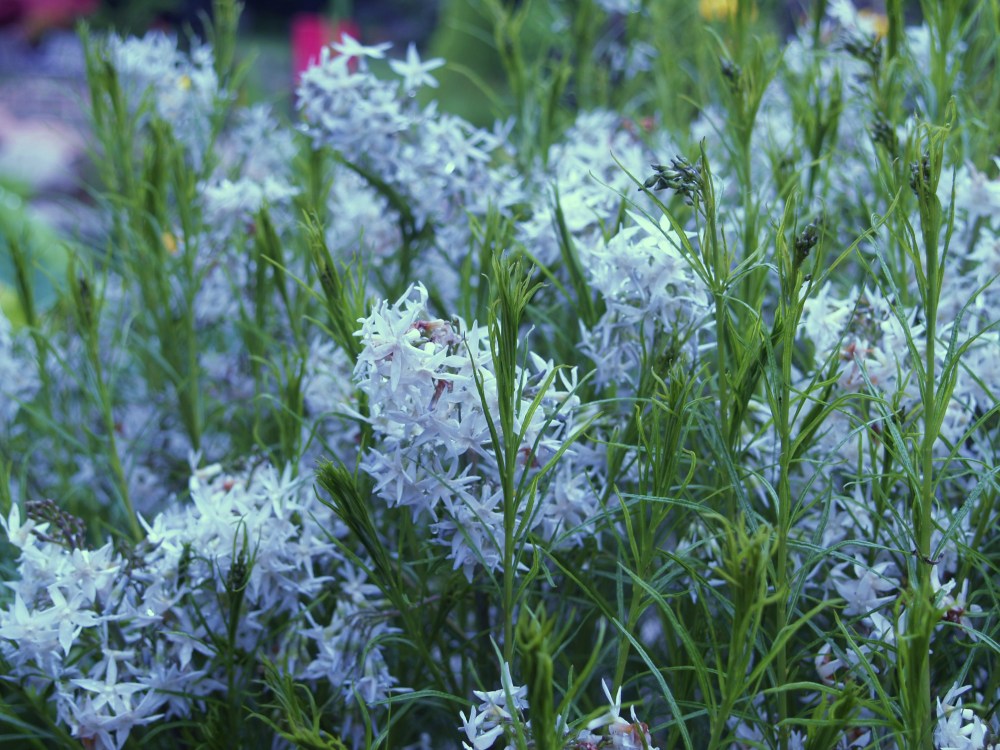Before the autumn foliage of deciduous trees and shrubs disappears completely I feel compelled to discuss the color yellow. Yellow is common, and perhaps the predominant color of autumn leaves, and for the most part it is my least favorite. With exceptions.
Too often yellows are faded, or signs of disease. The foliage of hostas goes limp with the first temperatures below freezing, and briefly turns a dying yellow before disappearing completely. The yellow autumn foliage color of the native swamp red maple (Acer rubrum) is unremarkable, with leaves often spotted, and no one is bothered much when a chilly wind blows them off a few weeks early. There’s not much to get excited about here.
A few trees barely change at all before their leaves drop, but many that turn to yellow are just as forgettable, and leaves often fall quickly. Good riddance. Fortunately, there are exceptions, including rich and glowing yellows that are not drab, and certainly not unremarkable.
I’ve recently written of the late season foliage colors of several of the Japanese maples in my garden, and while I would not exactly describe their color as yellow, they are indeed glowing and a sort of orange-yellow with some red thrown in for good measure. Enough words have been expended on them already, so what else is there?
My garden is bordered by towering swamp red maples and tulip poplars, and don’t believe anyone who tells you that red maples (except for cultivars that are readily available through garden centers) really turn red in the autumn. Maybe a few out of a forest full, but mostly they’re yellow, a lousy, faded, spotted yellow. And the tulip poplars, they turn yellow, but the trees are so tall that the foliage can’t be seen, and even if it is magnificent, only birds can enjoy it before it drops early in the season.
So, along the edge of the garden are these humongous trees, and all you can do is hope the leaves fall quickly so they can be ground up for compost before too much bad weather moves in. In the garden is a small ginkgo (Ginkgo biloba, above) that has taken forever to grow much past ten feet, and will only grow to twenty in someone else’s lifetime (I suppose). In October the foliage of ginkgo turns an extraordinary, glowing yellow that distracts from its taller neighbors.
The ginkgo’s leaves are brightly yellow, and unblemished for the most part so that the color is pure, and certainly wonderful. No other yellow dares to compare, but a shrubby perennial with long needle-like foliage that is not bright, but soft yellow is nearly ginkgo’s equal. Bluestar (Amsonia hubrichtii, above) is tough as nails, preferring dry and lean ground rather than more fertile soil. It bears an abundance of small blue flowers for a short while in the spring (below), but though late spring and summer it is a pleasing textural contrast to broad leaf plants.
By early October bluestar begins a slow turn from green to yellow, and by late in the month the color is nothing less than amazing. This is a simple and undemanding perennial, but as a single plant or in a mass there is no better bet for your autumn color dollar.
Yes! The Ginkgo is a distinct and fresh yellow. I saw a grand display of three of them yesterday at the SW corner of the Natl Arboretum (independence Ave). I used my IPhone to get some colorful pictures. Another lady used a very elaborate looking camera to capture her shots. Interesting that of all the beauty and color that is in every corner of the Arboretum gardens, two ladies chose the most obscure location to take pictures …due to the anything BUT mellow yellow of the Ginkgo!
I’ve loved Ginkgos since I went to college at an Ag school where they’d inadvertently planted females around a major building. What mess! But in my small garden I can only grow dwarf plants for the most part and I finally found a Ginkgo called Jade Butterflies that only gets 10 feet tall, so they say…. I just had to have it. It’s finally turning golden this year after simply dropping its leaves green last year. I’m hoping for more as the season progresses. i also have a Red Pygmy Japanese Maple that turns a delicious yellow after it turns red and orange from its natural red. Yellow can be wonderful it’s true.